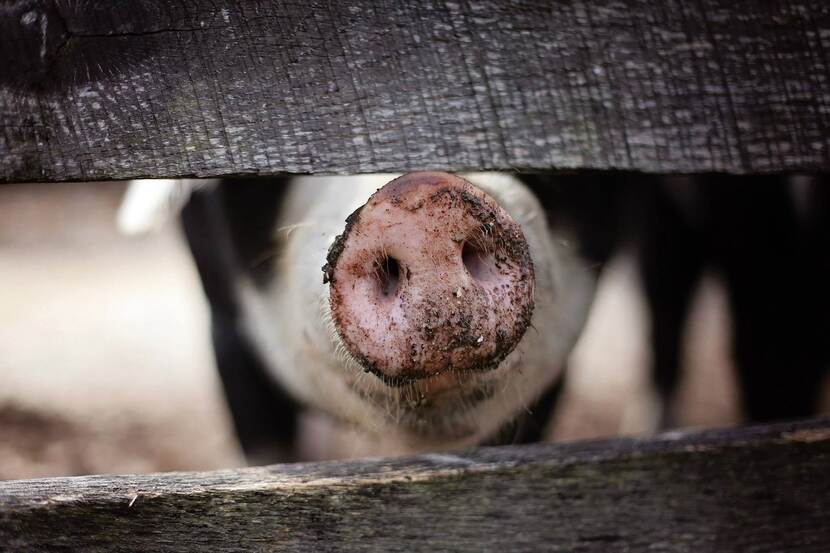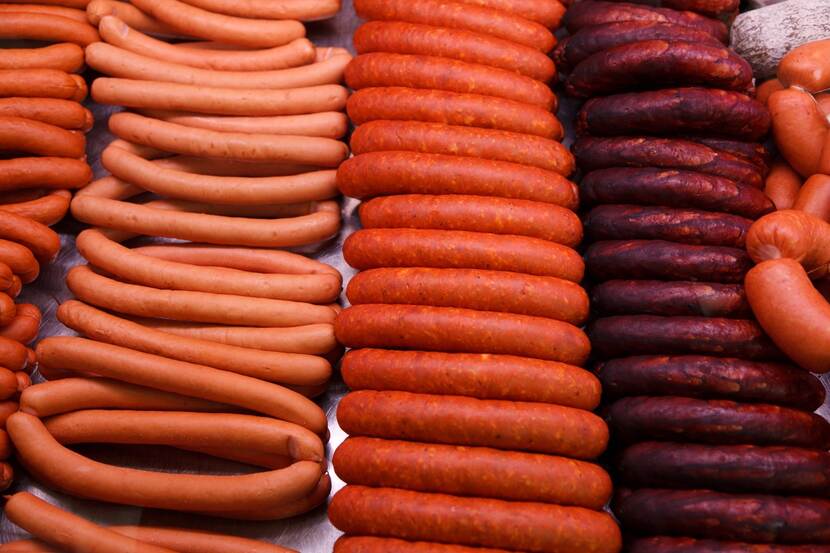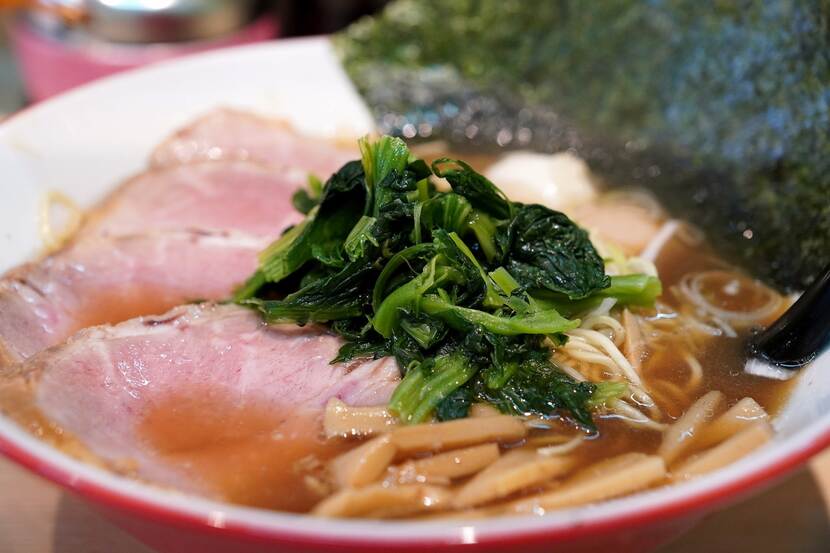The pig sector in Hungary
Analysis – Trends, challenges and opportunities in the Hungarian pig sector, characteristics of pork production, sectoral strengths and weaknesses, animal health, consumer attitudes and international trade

Hungarians have a slightly bizarre tradition. In history, in the middle of every winter, extended families in Hungarian villages gathered for the almost ritualistic feast of pig slaughter. The slaughter happened before the crack of dawn, and by nightfall, all parts of the animal had been processed; fresh sausages hung up, head cheese stuffed, hams hung out for smoking, meat cut and portioned, blood and liver sausages ready to be deep-fried in the following feast.
While the pork consumers buy in stores today come from industrial slaughterhouses which have to be in line with all the quality and safety standards of the EU, the tasting of fresh sausage, blood sausage and liver sausage are still a special treat, one of the country’s pork-related gastronomic traditions. Others include the production of regionally varying types of sausages (which is in fact a source of pride and fierce competition among cities of the Great Plains), the cooking of kocsonya (a dish resembling jelly or aspic with pork and other meat, vegetables, eggs and garlic), and the breeding of Mangalica pigs, a unique variety. This is not surprising since the husbandry of pigs has been a strong tradition in Hungarian agriculture since the Middle Ages. With the rise of industrialism, iconic Hungarian pork meat brands emerged which have been in production for more than 150 years – These include Gyulai, Pick, Herz and Csabai.
Out of the two major pillars of the Hungarian agroeconomy (plant cultivation and animal husbandry), the latter makes up for 30% of the country’s total agricultural output. Out of the animal husbandry sectors, meat production is the strongest industry. Pigs, along with poultry and cattle, are one of the three main livestock varieties.
Pork production in Hungary has its own challenges and opportunities. There are various issues that this sector faces yet certain unique avenues for improvement are open to the industry. What are the main trends? Is it worth investing? We looked at data from the period between 2015-2019 to see how the last decade affected the Hungarian pig sector and what can be expected in this industry as the world enters a new decade.
Background: The Hungarian pig sector
The amount of pig livestock in Hungary has been decreasing for decades. While at its peak in the 1980s, the sector operated with 8 million heads of livestock annually, by 2019, this figure has decreased to an annual 2.6 million. Especially in the 2010s, production numbers started to slope down more steeply. In the first five years of the decade, the number of pig farmers went from 183 thousand to 111 thousand. By the end of the decade, Hungary, was at the eleventh place in the EU-28, with an 1.8% share out of the EU’s annual 2.37 million tons of pork production.
While the number of slaughtered animals decreased in the 2010s in Hungary, carcass weights increased by 7% by the second half of the decade. By 2019, this meant a total production of 313 thousand metric tons (bone-in). There are more than 300 companies in the sector, mostly SMEs. The slaughterhouse capacity is relatively small and concentrated – There are 200 companies with valid licenses for pig slaughtering, but two companies conduct 45% of the slaughtering.
In terms of regional distribution, one-third of the pig livestock is concentrated in two counties – Hajdú-Bihar County in Eastern Hungary and Bács-Kiskun County in South Central Hungary (Between 300 and 350 thousand heads in each). Consequently, out of the largest slaughterhouses in the sector, three are located in Hajdú-Bihar County and two in Bács-Kiskun County.
| The largest Hungarian sectoral union in the meat industry is the Hungarian Meat Industry Federation. The federation has been active since 1991, its member companies produce 70% of the domestically consumed pork products. |

Characteristics of pork production
One characteristic weakness of the pork processing sector is that slaughterhouses, on a European scale, are small. The largest Hungarian slaughterhouses are medium-sized by European standards, which means that comparatively, the capacity to process slaughtered livestock is lower in Hungary as opposed to other competitor countries.
Another weakness of the domestic sector is that processing is scarce and relatively disorganized. While in the past twenty years, efforts have been made to concentrate corporate pork processing structures, there is a lack of large companies which are present in other European countries which can reach high processing capacity at an economy of scale. This is due to a lack of domestic and foreign capital investments in the sector.
As the product chain has a low level of organization, small to medium-sized farms have a weak income-generating capacity. This leads to other structural weaknesses. At this scale, there is a low level of biosecurity, and animal genetics, housing technologies and management aren’t coherently balanced. There are lags in the adoption of processing technology as well. Combined with the lack of scaling and low efficiency in processing, this hinders the development of the sector. All of these problems ultimately stem from a low level of organization and a general lack of capital investment, however, animal health issues which led to the decrease of the livestock population also slowed down development.
However, in the past years, slaughterhouse and processing plant investments were sped up, which also shows in recent trade figures. By Q1-Q2 2020, Hungary’s pork meat import decreased by 17% and the import of live pigs increased by 18%. Still, there is a long way to go.
This trend shows that the domestic sector has the potential to increase its importance in the regional market. With enough capital investment, there are windows of opportunity for Hungarian pork production to exploit. Because of Hungary’s geographic location and good position in international logistical routes, the Hungarian pig sector is in close proximity to large European markets to explore live animals and meat to.
Also, in the past years, the general status of animal health improved. The elimination of Porcine Reproductive and Respiratory Syndrome (PRRS) is well underway, and there are also improvements in animal genetics, which is expected to improve performance and livestock numbers.
Further investments could increase added value substantially. The areas which need investment the most are modernization, digitalization, innovation for compliance, integration and specialization. Aside from the need for capital investments, structurally, the increase of coordination could help scaling up production, streamlining the currently fragmented processing capacity.
These windows of opportunity will start becoming more important in the future, because environmental and societal pressures on livestock production in Western Europe can be expected to improve the competitive position of Hungarian pork production, as societal pressures are much lower in Central Europe.
However, consumer trends are slowly changing in Hungary. Animal welfare and sustainability are becoming more important. Other expectations include GMO-free feeding, a decrease of antibiotics usage and a demand for healthier products (lower salt, fat, additives content).
| Mangalica is a unique Hungarian breed which was developed in the 19th century. With its thick, curly coat of hair, it is one of the two pig breeds in the world with long fur. Mangalica bacon is considered a delicacy, described as “marble-like in texture, with pockets of creamy fat and with a soft feel.” There is a specialized union for Mangalica pig breeders called the Hungarian National Association of Mangalica Breeders. Mangalica farmers have been organizing annual promotion campaigns since 2013, however, following the 2018 ASF outbreaks in wild boar populations and the subsequent Japanese import restrictions, this small, export-oriented legacy sector lost 40%-50% of its market. Stakeholders have been building new business relations in foreign markets since, including in Germany, Sweden, Italy, Romania, Macau and Hong Kong. |

The animal health situation
While there are structural issues of the governance side of animal health, and livestock diseases (PRRS, ASF) present risks, there are improvements both in the general level of livestock health, as well as animal genetics. The main issue on the governance side is that district-level veterinary posts have been reorganized into national veterinary offices, decreasing the capacity of veterinary services. Veterinarians, especially young experts, tend to migrate to urban areas – This also contributed to the failure of preventing the spread of ASF in wild game populations.
As is the case in Western Europe and everywhere else, veterinary, food safety, environmental and animal health regulation compliance incurs considerable costs for pig farming. In the case of the Hungarian pork sector, which already faces an issue with income generation, this can lead to further problems. However, it is also true that in Hungary, there is less pressure from society for higher compliance with animal welfare and environmental standards.
Livestock diseases, as stated above, present risks to the sector but also provide certain opportunities for improvement. In the case of Porcine Reproductive and Respiratory Syndrome (PRRS), the domestic elimination program started in 2014, and contributed to the general decline of the amount of livestock and the number of pig farmers. However, the program is progressing. Out of Hungary’s 19 counties, the disease has been completely eliminated at 13. This decontamination program is paramount. Animal welfare requirements in the Netherlands, Denmark and Germany might lead to these countries decreasing their piglet export, and this can lead to Hungarian breeders seeing more demand from the domestic market. In this regard, the improvement of animal genetics will likely lead to higher performance.
The other menacing disease is African Swine Fever (ASF). (link to article) As a part of the European ASF outbreak of the 2010s decade, the disease has been present in Hungary since April 2018. More than 7 thousand individual cases have been identified in wild game populations, however, there has not been a case in domestic livestock populations. The culling of livestock, as a part of the containment effort, has put a large number of small farms out of business, especially in Eastern Hungary. Many of these small farms, which together held some 0.5 million heads of livestock, are expected to cease operations permanently.
ASF also caused major problems for Hungary’s international pork trade. After the outbreak, China, Japan, Korea and Taiwan have imposed export bans. The Eastern Asian region is one of the major target of Hungarian pork, the domestic industry annually sold 44-52 thousand tons of pork there, which is 30-40% of the total output. However, Japan recently lifted the complete pork import restriction through an ASF regionalization agreement.
To make matters worse, the ingoing ASF outbreak in Germany started driving pork prices down in Hungary too. These effects were already felt by Q4 2020. However, the sector is adapting to the changing international trade as best it can. With the loss of much of the Eastern Asian demand, export to Romania, Bulgaria and Croatia increased, and higher added value products, (e.g. salami) are sold in Germany.
Conclusion
Pig husbandry and pork production are historic Hungarian sectors. While the country is in a good geographical position for exporting to the EU market and there have been very promising recent developments in animal health and animal genetics, as well as increases in the processing capacity of the industry, the pig sector still needs horizontal and vertical integration and more capital investment to reach its full potential.
| Dit artikel is gebaseerd op een onlangs uitgevoerde marktstudie. In opdracht van de landbouwafdeling van de Nederlandse Ambassade in Boedapest heeft het Hongaarse Landbouweconomisch Instituut en marktstudie over de varkenssector uitgevoerd. Het rapport is beschikbaar voor Nederlandse bedrijven d.m.v. een email aan bdp-lnv@minbuza.nl |